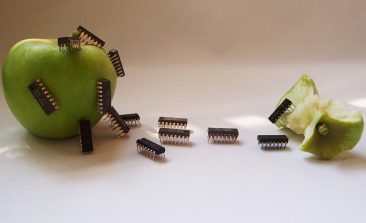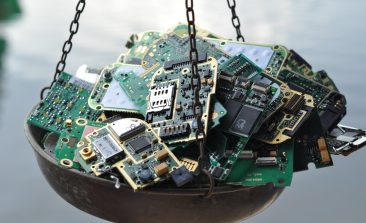Content to: electronic waste
Donate Phones and Save Lives: “Wir Packen’s An” Collects Old Smartphones for Refugees
Instead of lying in a drawer, your old mobile phone could help people on escape routes. The "Wir packen's an" association reveals how this works.
Edible Electronics: Reducing Electronic Waste With Digestible Robots and Nutritious Drones
Ever heard of edible electronics? Sounds like a contradiction in terms, but it could be a solution to reducing electronic waste, among other benefits.
Turning Electronic Waste Into Gold with Whey Protein
Electronic waste is not only resource intensive, but, recycling it is also inefficient. Could this common food byproduct improve the process, and is this really the best solution, after all?
Giving Old Computers to Young People Is Better for More Than Just the Environment
When office computers become too old, they all too often end up on the scrap heap. The association "Hey, Alter!" gives them to young people instead. This is not only more sustainable, but also an exciting opportunity for digital education.
Modular and Fairly Produced: How Syllucid Makes USB Cables More Sustainable
Did you know: 1kg of cable releases 3x the volume of CO2 emissions? Syllucid's sustainable and modular USB cables are made from recycled materials, versatile — and built to last.
The Global Environmental E-Waste Problem: What Can You Do About It?
E-waste is the world's fastest growing waste mountain. But there are ways to stop this development.
Do Fungal Circuit Boards Hold the Key for E-Waste Recycling?
Mushrooms are the forests' great recyclers, but can they also help reduce electronic waste?
Electronic Waste Recycling With the Help of Bacteria
Recycling e-waste still presents us with major challenges, partly because the individual components are difficult to separate from one another. However, researchers are developing a new method - with the help of bacteria.
Researchers Tackle E-Waste With Very First Biodegradable Display
Whether it's discarded smartphones, TVs or kitchen appliances - electronic waste is an ever-growing problem. In a bid to help stem the tide, researchers in Germany have now developed a biodegradable display.








